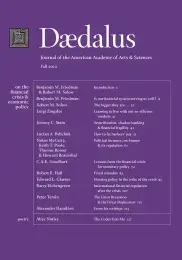Housing policy in the wake of the crash
Between 2000 and 2010, the U.S. housing market experienced a convulsion more extreme than in any previous recorded cycle. From May 2001 to May 2006, the Case/Shiller Standard & Poor’s twenty-city housing price index, which controls for changes in housing quality by comparing prices from repeat sales of the same homes, rose 54 percent more than consumer prices rose. In the three years that followed, housing prices, measured by the same index and corrected for inflation, fell more than one-third. Across metropolitan areas, the correlation between boom and bust was almost perfect. For every 10 percent that an area’s prices increased between 2001 and 2006, that area’s prices fell by 7.6 percent between 2006 and 2009. As prices plummeted, financial institutions that had exposed themselves to sizable housing-market risk became insolvent. The entire U.S. banking system seemed at risk.
The extreme housing-price swings were mirrored by equally oversized fluctuations in the construction industry. America typically produces about 1.5 million housing units annually, which is about 200,000 more than the rate of household formation. In both 2005 and 2006, builders completed more than 1.9 million new units, at least 580,000 more than the rate of household formation in each year. By a conservative estimate, America erected at least 2 million extra units, relative to historic standards, during the boom. By 2009, there were upwards of 5 million more vacant homes in the United States than there were in 2000. That glut, in turn, explains the decline in new construction and jobs: fewer than 800,000 units were built in 2009; the unemployment rate in the construction sector exceeded 20 percent in early 2010.
While the extremity of the cycle is clear, the causes of the great housing convulsion are more mysterious. Some economists have emphasized the role of easy credit and low interest rates. Certainly, as real and nominal rates fell, buyers benefited from cheaper mortgages, and credit-constrained purchasers were able to cover the costs of more expensive houses. But there is little evidence to support the view that changes in interest rates were large enough to explain the housing market’s recent crash. On average, as interest rates decline by one percentage point, housing prices increase by roughly 6.8 percent. Even at very low interest rate levels in markets where housing supply is limited, a one-hundred-basis-point decrease in real rates does not push prices up more than 8 percent. Between 2000 and 2006, real interest rates fell by 1.3 percent, which suggests that falling rates can explain, at most, a 10.4 percent housing price rise.
. . .
